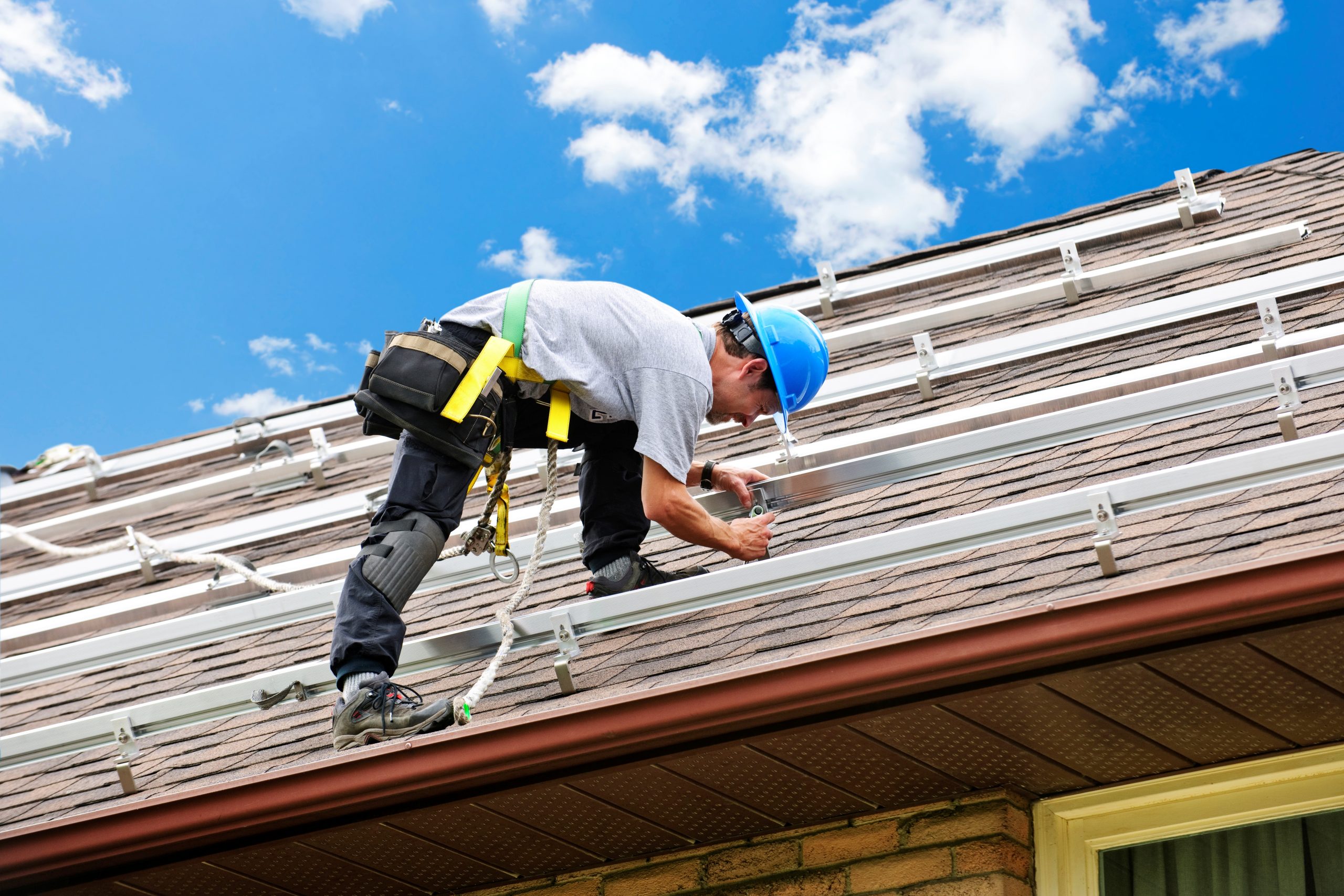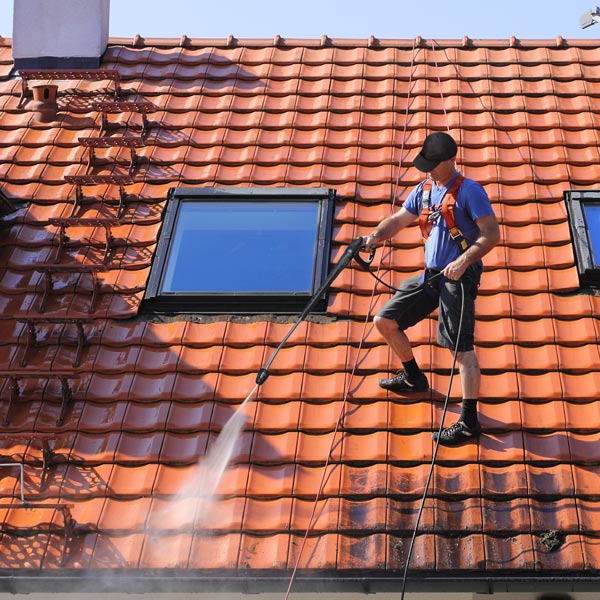The Ultimate List for Roof Install: Making Certain Top Quality and Sturdiness
The process of setting up a roofing needs cautious interest to detail. A thorough checklist can help guarantee top quality and durability throughout the task. From reviewing the existing roofing condition to picking the right materials, each action is necessary. Correct preparation and tools play an important role in attaining an effective installment. Many neglect the importance of last evaluations and recurring maintenance. Recognizing these aspects can greatly influence the longevity of a new roof covering.
Evaluating Your Current Roofing System Condition
Just how can one successfully identify the problem of their current roof covering? A comprehensive inspection is crucial for assessing a roof's stability. Property owners must start by analyzing the roof covering from the ground, looking for visible indications of wear such as missing out on roof shingles, drooping locations, or discoloration. Closer examination can be done by accessing the roof itself, where one must examine for cracked or curled tiles and check flashing around vents and chimneys.Additionally, the inside of the home warrants focus; water spots or mold and mildew development on ceilings and wall surfaces may suggest leaks. Attic examinations can expose potential issues, such as insufficient ventilation or indications of moisture.Regular evaluations, ideally two times a year, can help determine problems early and prevent expensive repair work. By understanding the roof covering's present state, house owners can make educated choices about needed maintenance or replacements.
Selecting the Right Roofing Materials
When choosing roofing materials, what variables should home owners think about to assure a sturdy and efficient choice? Initially, the environment plays a significant function; products should endure local climate condition, whether it's hefty rainfall, snow, or intense sunlight. Next off, the durability of the material is vital; options like metal or slate deal expanded life expectancies compared to asphalt shingles. Homeowners need to additionally examine the product's weight, as this can affect the structural stability of the home. Additionally, aesthetic appeals issue; the selected material ought to complement the total building design. Power efficiency is another factor to consider; some materials mirror heat, lowering cooling prices. Budget plan restraints will determine choices; while some products may have a reduced ahead of time expense, long-term toughness can lead to greater savings. By evaluating these variables, property owners can make educated decisions that improve their roofing system's high quality and longevity.
Planning for Installation
Prior to the installation procedure begins, house owners should assure that their residential or commercial property is adequately prepared to fit the new roof. This preparation includes numerous essential steps to assure a smooth and reliable installation. First, house owners should remove the location around the residence of any type of particles, tools, or furnishings that could prevent gain access to for specialists. Furthermore, it is essential to educate next-door neighbors about the upcoming job to decrease disruption and secure cooperation.Next, homeowners should inspect their existing roof covering and architectural elements, dealing with any possible concerns such as rotting timber or leakages that could influence the setup. Moreover, securing needed authorizations and sticking to regional building ordinance is important for compliance and safety and security. Lastly, setting up the setup during beneficial weather assists stop delays and assurances that the work profits without problems. Proper preparation sets the structure for an effective roofing project, eventually enhancing the longevity and performance of the new roof covering.

Vital Tools and Equipment
In roof installment, having the right devices and tools is vital for a successful project. This consists of important security gear, various roofing installment devices, and reliable material handling tools. Proper prep work and choice of these things can greatly improve performance and safety and security on the work website.
Security Gear Necessities
Safety equipment is a necessary element of any type of roof installation task, making certain the wellness of workers at elevated heights. Important safety and security devices includes tough hats, which secure against dropping particles, and safety goggles to protect the eyes from dirt and particles. Non-slip footwear is substantial for keeping grip on high surface areas, while harnesses and lanyards offer loss defense, avoiding significant injuries. Gloves assist shield hands from sharp products and reduce fatigue throughout extended periods of job. In addition, high-visibility vests enhance visibility, advertising recognition among employee and nearby workers. The use of ear defense might likewise be suggested in noisy settings. Generally, sticking to security gear requirements is important for a risk-free and effective roofing setup process.

Roofing Installment Tools
Proper precaution lay the groundwork for an effective roofing task, but having the right tools and tools is similarly vital. Essential read more devices for roof installation consist of a ladder, permitting risk-free accessibility to the roofing, and a roofing nail weapon to ensure effective and secure attachment of products. A chalk line is essential for noting straight lines, while an utility blade is needed for cutting roofing materials properly. Furthermore, a crowbar help in eliminating old roof shingles. Employees should likewise have a level to verify proper placement and drainage. A great pair of work handwear covers shields hands while providing grasp. With each other, these tools help with a smooth roof process, improving both top quality and resilience.
Material Handling Equipment

A range of material handling equipment is essential for a reliable roof covering installation procedure. Equipment such as forklifts, hoists, and dollies assist in the movement of heavy materials like roof shingles and underlayment to the work site and onto the roof covering. Using scaffolding and ladders warranties secure access to raised areas while decreasing the danger of injury. Tarps and bins are needed for appropriate storage space and company of products, stopping damages and guaranteeing simple retrieval. Additionally, a crane may be required for larger roof tasks to raise significant materials directly onto the roof covering. Correct training in using this tools is necessary; it enhances workflow effectiveness and contributes to general task safety and security, assuring a successful roof covering setup.
Step-by-Step Installment Refine
The detailed setup procedure is essential for a successful roof setup. It starts with preparing the roof surface area, complied with by the correct installation of underlayment, and wraps up with the efficient safeguarding of roof materials. Each of these steps plays a vital function in making certain the sturdiness and functionality of the roof covering.
Prepare the Roofing System Surface Area
Preparing the roofing surface is important for making sure an effective setup of roof materials. This procedure starts with a complete inspection to determine any type of existing damage or particles. Any loosened roof shingles, extending nails, or old roof covering products need to be eliminated to create a tidy, smooth foundation. Next, the roof deck need to be inspected for rot or architectural concerns, as these can compromise the honesty of the new roofing system. After fixings, a comprehensive cleaning is essential; this includes sweeping away dirt, leaves, and any kind of other pollutants that might hinder adhesion. Guaranteeing appropriate drainage and ventilation is vital, as these aspects influence the long life of the roofing. A well-prepared surface area sets the phase for excellent setup and durability.
Set Up Underlayment Correctly
Mounting underlayment correctly is fundamental for enhancing the general efficiency of the roof. The procedure begins with selecting the ideal underlayment material, which can consist of really felt, artificial, or rubberized choices. Next, confirm the roof covering surface area is clean and dry prior to laying the underlayment - commercial roofing honolulu. Begin at the most affordable factor of the roof covering, rolling out the underlayment flat and overlapping each row by a minimum of 6 inches. It is very important to secure the underlayment in position with staples or roofing nails, avoiding gaps or wrinkles that can compromise water resistance. Ultimately, trim excess material at the edges, ensuring a neat finish. This thorough setup step is crucial for giving an included layer of defense versus wetness and boosting resilience
Protect Roof Materials Efficiently
After confirming the underlayment is properly installed, the following action involves safeguarding the roof products effectively. The roof covering service provider need to gather all required products, including roof shingles, nails, and flashing. Beginning at the most affordable point of the roofing, tiles should be stocked a staggered pattern, validating appropriate overlap to stop leaks. Each tile should be secured with nails, using the supplier's suggested spacing and amount. It is necessary to drive nails straight, avoiding over-penetration, which can compromise the product. Blinking need to be mounted around smokeshafts and vents to enhance waterproofing. The specialist must perform an extensive inspection to confirm all products are safely attached, as this will considerably affect the roofing system's total toughness and longevity.
Conducting Final Evaluations
Detailed last assessments are crucial to assure that a recently mounted roofing satisfies all safety and security and high quality criteria. This essential action involves evaluating the entire roof for any possible issues that may develop post-installation. Examiners ought to analyze the placement of tiles, making sure they are correctly protected and without problems. Flashing and ventilation systems need to additionally be examined for appropriate installment and functionality.Additionally, the assessor must inspect rain gutters and downspouts to verify they are suitably positioned to assist in water drain. Any indications of leaks, misaligned products, or inadequate sealing around penetrations ought to be resolved right away. Contractors must also ensure that all particles from the installation process is removed, leaving the site tidy and secure. Carrying out these comprehensive examinations assists prevent future complications, eventually extending the lifespan of the roof and supplying house owners with tranquility of mind regarding their investment.
Maintaining Your New Roof Covering
Appropriate maintenance is important for ensuring the longevity and performance of a brand-new roofing. Homeowners need to carry out regular inspections at least twice a year, ideally in springtime and fall, to recognize prospective issues early. Throughout these assessments, they ought to look for indicators of damage, such as missing tiles, leaks, or particles build-up, which can hamper drain and advertise mold growth.Cleaning seamless gutters and downspouts is important, as stopped up systems can lead to water damage and architectural issues. Additionally, cutting overhanging branches can avoid abrasion and debris accumulation on the roofing surface.It's likewise recommended to arrange specialist evaluations every few years to review the roofing's problem completely. Keeping documents of maintenance activities and repair services can help track the roofing system's efficiency gradually (honolulu roofing contractor). By adhering to a regular maintenance regimen, house owners can shield their financial investment and guarantee their new roof covering remains reliable for several years to find
Regularly Asked Inquiries
The length of time Does a Regular Roofing Setup Take?
The duration of a regular roof setup differs based on aspects such as roof dimension, materials, and climate conditions. Typically, it can take anywhere from someday to numerous weeks to finish the installation.
Can I Set Up a New Roofing System Over an Existing One?
The question of mounting a new roof over an existing one commonly emerges. Many home owners consider this alternative for cost-effectiveness, however it is necessary to examine neighborhood building ordinance and the structural honesty of the existing roofing.
What Allows Are Needed for Roofing System Installation?
Before installing a roofing system, one need to inspect regional policies. Commonly, structure authorizations are needed, in addition to inspections to ensure conformity with safety criteria and zoning legislations. Consulting with local authorities is essential for correct support.
What Warranties Are Readily Available for Roofing Materials?
Different guarantees exist for roofing products, commonly including producer service warranties covering flaws and efficiency. Additionally, some service providers offer handiwork guarantees, guaranteeing setup quality. Customers should very carefully assess terms to recognize insurance coverage duration and constraints.
Just How Can Climate Impact the Installment Refine?
Climate significantly influences the installation procedure, as rain, snow, or severe temperatures can delay work, influence material attachment, and concession safety. Correct planning and organizing around weather report are crucial for successful roof covering installation.